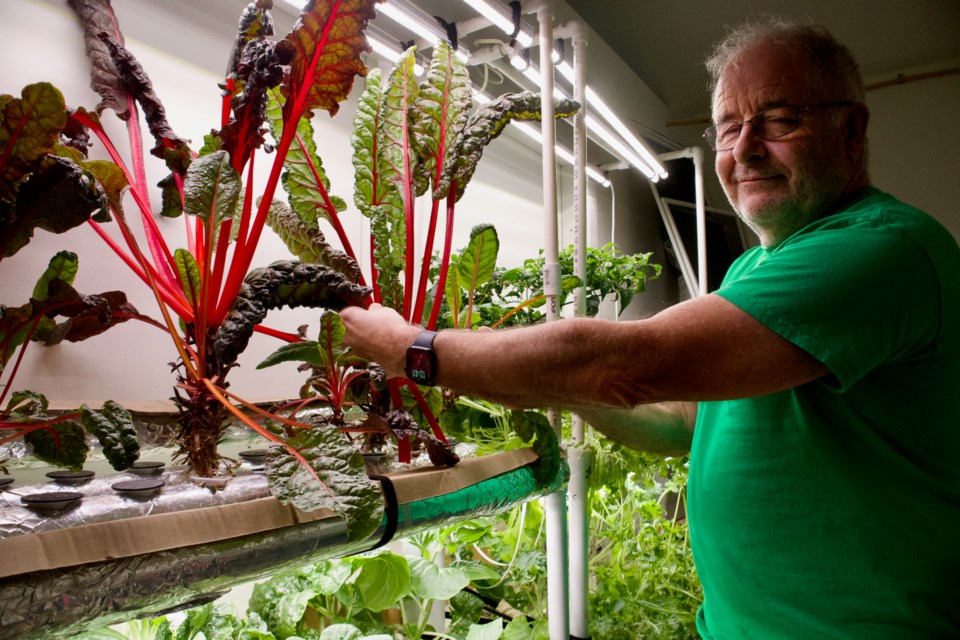In a small, climate-controlled room in their Whistler home, Jim Brown and Natalie Rock have transformed a hobby into a year-round food source. What started as a pandemic-era experiment in hydroponic gardening has blossomed into a thriving indoor farm yielding lettuce, bok choy, kale, peppers, and herbs—all grown without soil, pesticides, or reliance on grocery store supply chains. So productive is their system they're now hoping to find a local rabbit owner who could benefit from their excess trimmings.
With food prices soaring and the looming threat of U.S. tariffs on Canadian produce, the couple’s DIY hydroponic system offers a glimpse into how locals are adapting to rising costs and food security concerns.
From pandemic project to food security solution
When COVID-19 disrupted supply chains and sent grocery prices skyrocketing, Brown decided to take matters into his own hands. Inspired by a friend’s small-scale hydroponic setup, he built his own system for about $350—far cheaper than commercial kits, which he said can cost upwards of $2,000.
“During COVID, things were getting scarce and expensive,” Jim said. “We saw this as something practical we could do.”
The system uses PVC pipes, LED grow lights, and a 60-litre reservoir to circulate nutrient-rich water to the plants. By controlling variables like temperature, humidity, and light exposure, the couple grows produce year-round—even in winter.
Local roots for food sustainability
Their efforts align with a growing movement in the Sea to Sky corridor to boost regional food resilience. Pemberton, long known for its fertile soil, is already home to plentiful farms supplying greens to Whistler restaurants. But as climate change and trade tensions threaten traditional agriculture, small-scale hydroponics could play a bigger role in local food security.
“With what’s happening in the U.S. and these tariffs, our food supply is vulnerable,” Jim said. He pointed to a Vancouver Island grower who has successfully cultivated oranges hydroponically. “If we can figure out how to grow more here, we don’t have to rely on California or Florida.”
Cutting costs—and waste
Beyond sustainability, the system saves money. The couple estimates they’ve cut $500 a year from their grocery bill by growing their own lettuce alone. They’ve also expanded their diet, experimenting with Swiss chard and bok choy—vegetables they rarely bought before.
“We don’t have to wash the lettuce—it’s just clean,” Natalie said. “And there’s no waste. What we don’t eat, we give away or compost.”
The setup isn’t without challenges. Some crops, like potatoes, aren’t suited to hydroponics, and maintaining optimal conditions requires attention to detail. But for Jim, who worked in telecommunications, the technical side is part of the appeal.
“It’s like electronics—there’s no room for error,” he said with a laugh.
A model for others?
The couple hopes their project inspires others to try hydroponics, especially as food prices keep climbing. They recommend starting small, sourcing Canadian seeds and avoiding imported materials.
“You can do this in your home,” Jim said. “It’s not hard—just add water and seeds.”
As Whistler faces the dual pressures of affordability and sustainability, innovations like this could help bridge the gap between local needs and global supply chains. For Jim and Natalie, the rewards go beyond savings.
“There’s something really satisfying about eating what you’ve grown,” Natalie said. “It changes how you think about food.”




